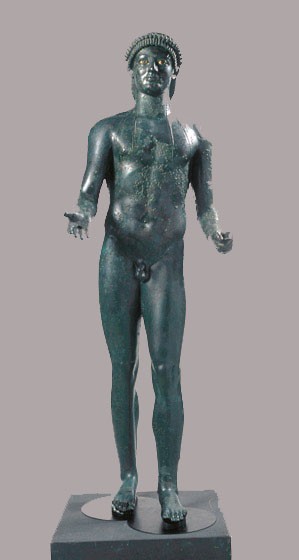Romans fighting wars in the East coveted the lavish lifestyles, splendid palaces, and art collections of the wealthy Hellenistic kings. Throughout the second century BC, conquering Roman generals took works of Greek art back to Rome, parading them in triumphal processions and displaying them in temples, civic spaces, or their homes. Romans became enamored of Greek culture and immersed themselves in its literature, philosophy, and art. Greek artists flocked to Rome to satisfy collectors eager to acquire works of art that would reflect their education, sophistication, and status. Roman patrons, Cicero among them, placed orders with agents in Athens and elsewhere for sculptures to be shipped for display in their villas. There they served new purposes as decorative furnishings. Gleaming bronze images of Greek gods such as Apollo adorned gardens or became “silent servants” bearing trays or torches to illuminate banquets.
Pictured: Apollo ("Pompeii Apollo"), 100 BC – AD 79; bronze, copper, bone, stone, and glass. Lent by the Soprintendenza Speciale per i Beni archeologici di Pompeii, Ercolano, e Stabia
